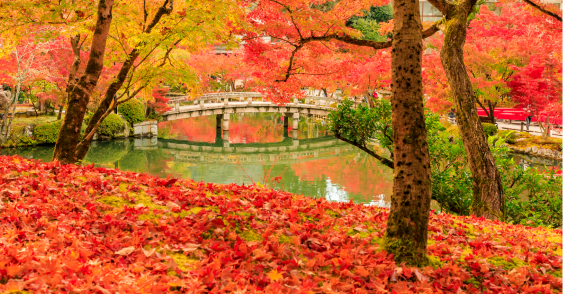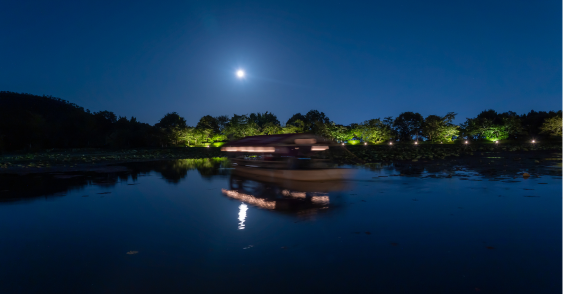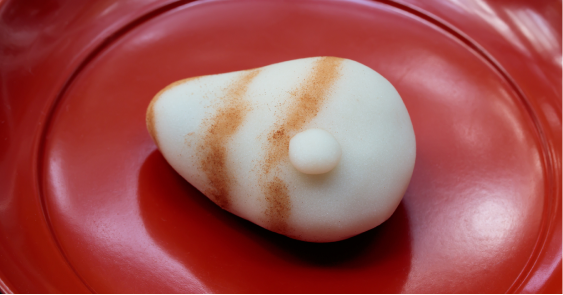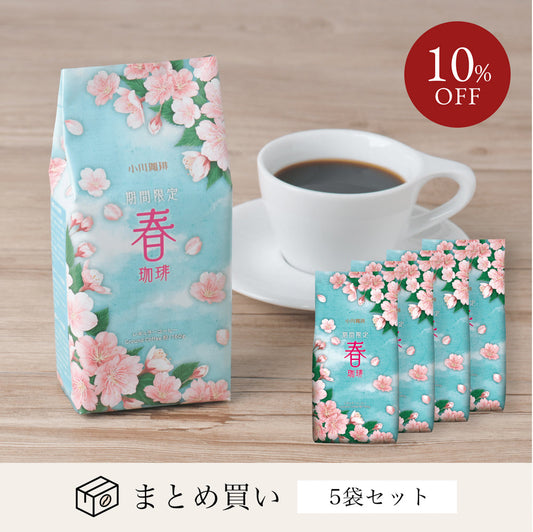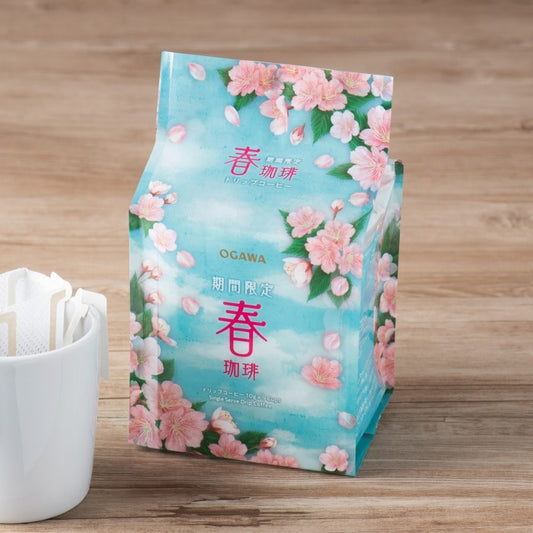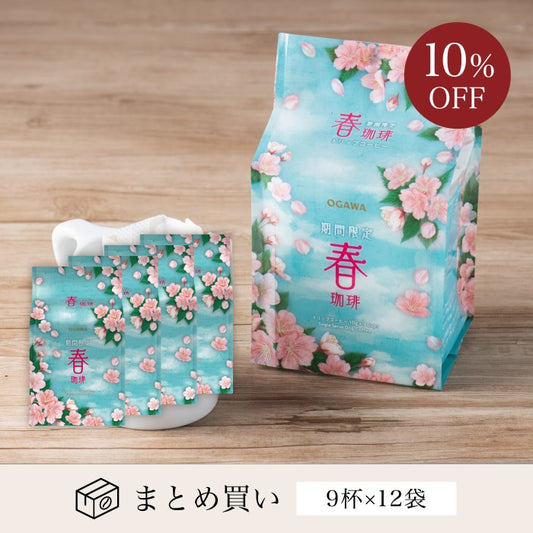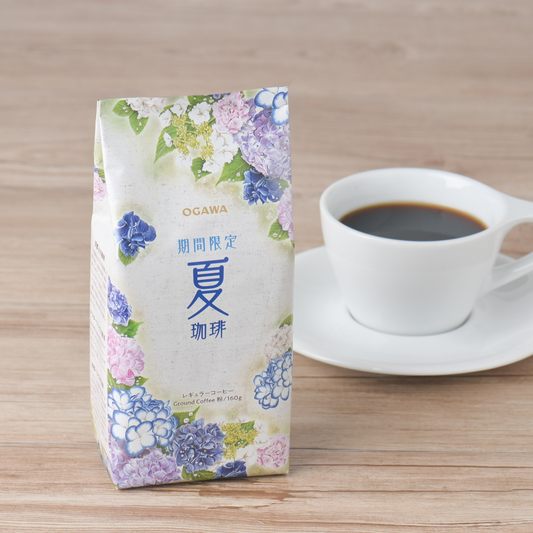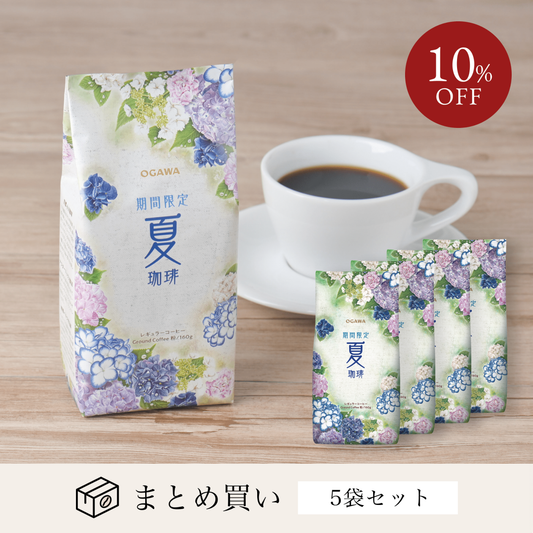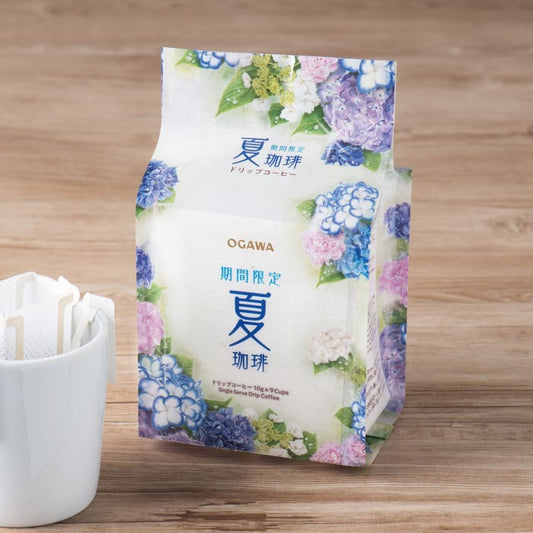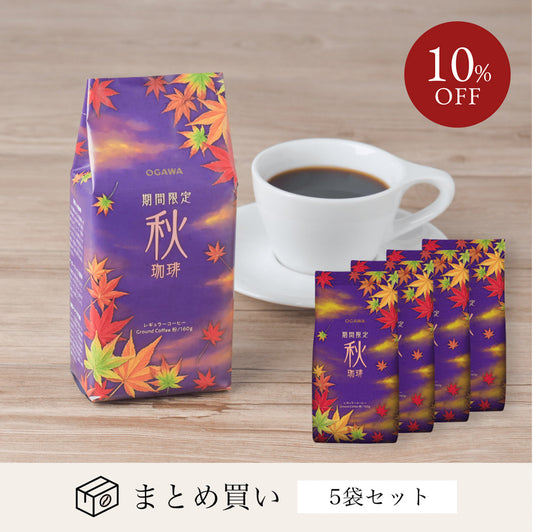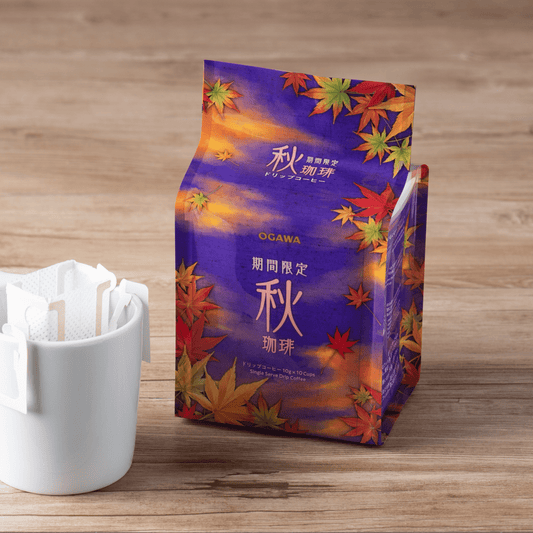Taste
Coffee appraisers select coffee beans that match the season while keeping the four seasons in mind.

With a gorgeous fragrance
Taking advantage of the gentle sweetness
Mellow flavor
Floral and mellow
With the intense heat of summer coming to an end and the season of blooming mountains in full bloom upon us, we have created a blend that makes use of a gorgeous fragrance and soft sweetness.
Design
The illustrations of delicate flowers and trees are carefully drawn by hand by our employees.

Sunset x Autumn Leaves
The setting sun spills through the autumn leaves, creating a slightly sad autumn sky.
I painted this to convey the vividness of the autumn leaves, the beauty of the fiery sunset as the night turns to night, and the slight sense of loneliness that can be felt at autumn twilight.
秋珈琲の商品ラインナップ
ドリップコーヒーの
おいしい淹れ方

Shake the bag gently to push the coffee down and cut along the cutting lines at the top.
Shake the bag lightly to drop coffee to the bottom and cut the bag along the slit.

Hold the bottom of the hook and spread it apart to secure it firmly around the edge of the cup.
Widen the two hooks and hang them on a cup.

Pour in a small amount of hot water, let it steep for about 20 seconds, then pour in hot water in 2 or 3 batches. (Finished product: about 130 to 140 ml)
After moisten coffee with a little hot water and wait for about 20 seconds, pour hot water over coffee in 2 or 3 sessions. (You have130 - 140ml of brewed coffee.)


Autumn Walk in Kyoto

Feel the autumn in Kyoto with "Autumn Coffee."
We will bring you Kyoto's rich nature and charming cityscapes that change with the seasons.
"Autumn is the season for appetite" and "Autumn is the season for art". The season brings us joy in many areas. When we think of autumn in Kyoto, we think of the attractive autumn leaves that adorn the temples and shrines. What do you think about as you gaze upon the autumn leaves blazing in the sunset?
Supported by: Leaf
Ogawa Coffee's recommended points

OGAWA COFFEE Kyoto Station store is located at the entrance to Kyoto. As the cold weather approaches, head to a famous autumn foliage spot with warm eyes and a cup of hot takeout coffee in hand.
Limited Edition Coffee List
-
Limited time Spring Coffee Regular Coffee No.411
Regular price 653円(税込)Regular price → Sale price 653円(税込)Unit price per -
Limited time offer Spring Coffee Regular Coffee 5 pieces No.376
Regular price 2,938円(税込)Regular price → Sale price 2,938円(税込)Unit price per -
Limited time offer Spring Coffee Drip Coffee 9 cups No.415
Regular price 799円(税込)Regular price → Sale price 799円(税込)Unit price per -
Limited time offer: Spring drip coffee, 9 cups, 12 pieces, No.463
Regular price 8,629円(税込)Regular price → Sale price 8,629円(税込)Unit price per -
Limited Time Only Summer Coffee Regular Coffee No.412
Regular price 594円(税込)Regular price → Sale price 594円(税込)Unit price perSold out -
Limited time offer: Summer Coffee Regular Coffee 5 bags No.377
Regular price 2,673円(税込)Regular price → Sale price 2,673円(税込)Unit price perSold out -
Limited time offer Summer Coffee Drip Coffee 9 cups No.416
Regular price 714円(税込)Regular price → Sale price 714円(税込)Unit price perSold out -
Limited time Autumn Coffee Regular Coffee No.409
Regular price 653円(税込)Regular price → Sale price 653円(税込)Unit price perSold out -
Limited time Autumn Coffee Regular Coffee 5 pieces No.467
Regular price 2,938円(税込)Regular price → Sale price 2,938円(税込)Unit price perSold out -
Limited time Autumn Coffee Drip Coffee 9 cups No.417
Regular price 799円(税込)Regular price → Sale price 799円(税込)Unit price per






